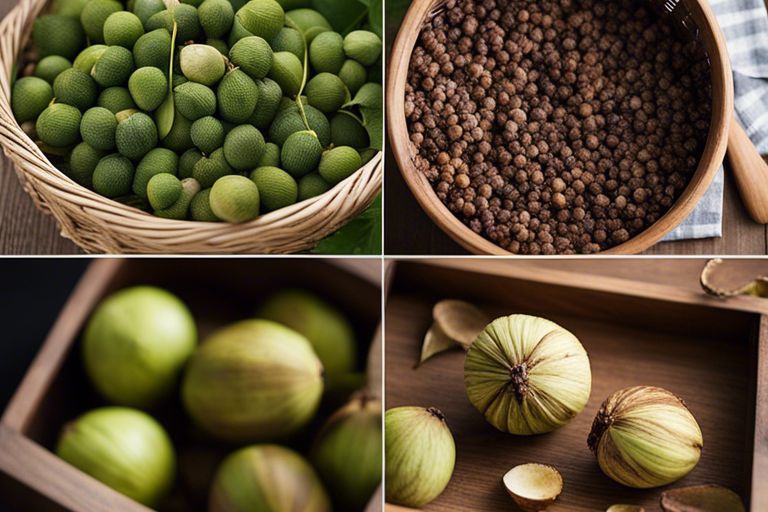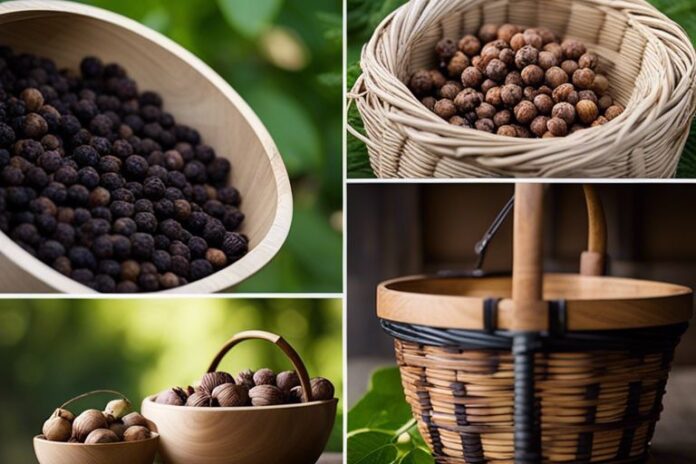You have the potential to unlock a treasure trove of nutritional benefits and dyeing capabilities by properly harvesting and utilizing black walnut husk. Although often overlooked, black walnut husk is a versatile material that can be used in cooking, herbal remedies, and natural dyeing. Before exploring into the process, it is important to be aware of the staining properties of black walnut husk, which can be tricky to handle. This ultimate guide will walk you through the steps of harvesting, preparing, and creatively using black walnut husk to make the most of this powerful natural resource.
Key Takeaways:
- Harvest black walnut husks in the fall: The best time to collect black walnut husks is during the fall when they have ripened and turned dark brown or black.
- Use gloves when handling black walnut husks: The husks contain a natural dye that can stain your hands and clothing, so it’s best to wear gloves when harvesting and processing them.
- Dry and store husks properly: Once harvested, lay the husks out to dry in a well-ventilated area before storing them in a cool, dark place to preserve their color and potency.
- Utilize black walnut husks for medicinal purposes: Black walnut husks are known for their anti-fungal, anti-inflammatory, and antiseptic properties, making them a valuable ingredient in herbal remedies and tinctures.
- Experiment with natural dyes and crafts: The dye extracted from black walnut husks can be used to stain wood, dye fabric, or create unique art projects, offering a sustainable and eco-friendly alternative to synthetic dyes.
Identifying Black Walnut Trees and Nuts
Types of Black Walnut Trees
You need to know the different types of black walnut trees to identify them accurately. The common black walnut (Juglans nigra) is the most prevalent species found in North America. It has distinctive compound leaves, each with 15-23 leaflets arranged alternately along the stem. The California black walnut (Juglans hindsii) is another common type with similar features but is native to California. The Arizona walnut (Juglans major) is found in the southwestern United States. The Brazilian walnut (Bertholletia excelsa) is a different species altogether and is commonly known as a nut because of its hard, indehiscent fruit.
| Type of Black Walnut Tree | Characteristics |
| Common Black Walnut | Compound leaves with 15-23 leaflets |
| California Black Walnut | Similar features, native to California |
| Arizona Walnut | Found in the southwestern United States |
| Brazilian Walnut | Known as a nut, hard indehiscent fruit |
Thou should familiarize yourself with these characteristics to accurately identify the different types of black walnut trees.
Recognizing Ripe Black Walnuts
Types of Black Walnuts
It is crucial to recognize ripe black walnuts before harvesting them. Ripe black walnuts will have a dark, almost black husk that is slightly softened to the touch. The nuts inside will be firm and dark in color. Do not harvest green walnuts as they are still immature and will not yield the desired flavor or texture.
Harvesting Black Walnuts
Factors Affecting Harvest Timing
Now is the perfect time to consider when to harvest black walnuts. Factors such as the color of the husk, husk texture, and husk odor can indicate the readiness of the nuts for harvesting. Additionally, checking the firmness of the nut inside the husk and the husk’s ability to be punctured are imperative indicators. Black walnuts are ready to be harvested when the husks are yellow-green and slightly soft to the touch. Though, keep in mind that the husks will darken and soften further after they fall from the tree.
Step-by-Step Guide to Harvesting
Black walnuts are best harvested by following these few simple steps:
| Step 1: | Evaluate the readiness of the nuts by checking the color, texture, and odor of the husks. |
| Step 2: | Wear gloves to avoid staining your hands and clothing, as the husks contain a strong dye. |
| Step 3: | Use a long stick or pole to dislodge the nuts from the tree, allowing them to fall to the ground. |
| Step 4: | Collect the fallen nuts promptly to prevent mold growth on the husks. |
This simple process ensures the safe and efficient harvesting of black walnuts. Wear proper protective gear, handle the nuts carefully, and store them in a well-ventilated area to dry.
Preparing Black Walnut Husk for Use
Despite the tough exterior of black walnut husks, they hold valuable properties that can be utilized for various purposes, from natural dyes to medicinal treatments. To make the most of these husks, proper preparation is crucial.
Tips for Processing and Cleaning Husks
- Use gloves when handling black walnut husks to prevent staining of hands.
- Remove the outer husk layer to access the inner husk, which contains the valuable compounds.
- Rinse the husks thoroughly under running water to remove any dirt or debris.
- Allow the husks to dry completely before storing to prevent mold growth.
Perceiving the distinct aroma of the husks is a sign of their readiness for use.
Methods for Drying and Storing
Even after cleaning the husks, further preparation is required to ensure their longevity and effectiveness in various applications. Proper drying and storage methods are crucial.
Husk drying is best done in a well-ventilated area away from direct sunlight to prevent loss of potency. Once dried, store the husks in airtight containers in a cool, dark place to maintain their quality for future use.
Tips: Always label the containers with the date of drying to track the freshness of the husks. Avoid storing in damp or humid areas to prevent spoilage.

Using Black Walnut Husk
Traditional and Contemporary Uses
After harvesting black walnut husks, they can be utilized in various traditional and contemporary applications. Contemporary uses include natural dyes, medicinal tinctures, and homemade beauty products. Black walnut husk has been valued for its antimicrobial and anti-inflammatory properties, making it a versatile ingredient in modern herbalism.
Pros and Cons of Black Walnut Husk Applications
| Pros | Cons |
| Rich in antioxidants | Potential skin irritation |
| Natural dye properties | Stains clothing |
| Antimicrobial benefits | Strong aroma |
On exploring the pros and cons of black walnut husk applications, it is evident that the husk offers numerous benefits, such as being rich in antioxidants and possessing natural dye properties. However, it is important to be cautious of potential skin irritation and staining issues when using this natural ingredient.
Another important point to consider is the potential skin irritation that can occur when using black walnut husk. While the antimicrobial benefits are valuable, the strong aroma and staining properties may not be suitable for all applications. It is recommended to perform a patch test before using black walnut husk on the skin to avoid any adverse reactions.
To wrap up
With this in mind, the information provided in this ultimate guide to harvesting and using black walnut husk serves as a comprehensive resource for anyone looking to make the most of this valuable natural product. From proper harvesting techniques to various uses in dyeing, medicine, and even as a natural insect repellent, the black walnut husk offers a wide range of benefits for both practical and creative purposes. By following the tips and guidelines outlined here, you can confidently and effectively incorporate black walnut husk into your projects and enjoy all of its unique qualities. Now, armed with this knowledge, you can harness the potential of black walnut husk to enhance your life in a multitude of ways.
FAQ
Q: What are the benefits of harvesting black walnut husks?
A: Harvesting black walnut husks can provide a renewable source of natural dye, insect repellent, and medicinal properties. The husks contain juglone, a compound with antimicrobial and pesticidal properties, making them valuable for various purposes.
Q: When is the best time to harvest black walnut husks?
A: The ideal time to harvest black walnut husks is in the fall when they begin to turn from green to yellow or brown. This indicates that the husks are mature and contain the highest concentration of juglone. Waiting until the husks start to naturally fall from the tree ensures optimal ripeness for harvesting.
Q: How can black walnut husks be used after harvesting?
A: After harvesting black walnut husks, they can be used to create natural dyes for fabrics and yarns, as well as for tanning leather. The husks can also be used to make an organic insect repellent or infused into oil for topical treatments. Additionally, black walnut husks can be ground into a powder and used in herbal medicine for their antimicrobial and anti-inflammatory properties.

